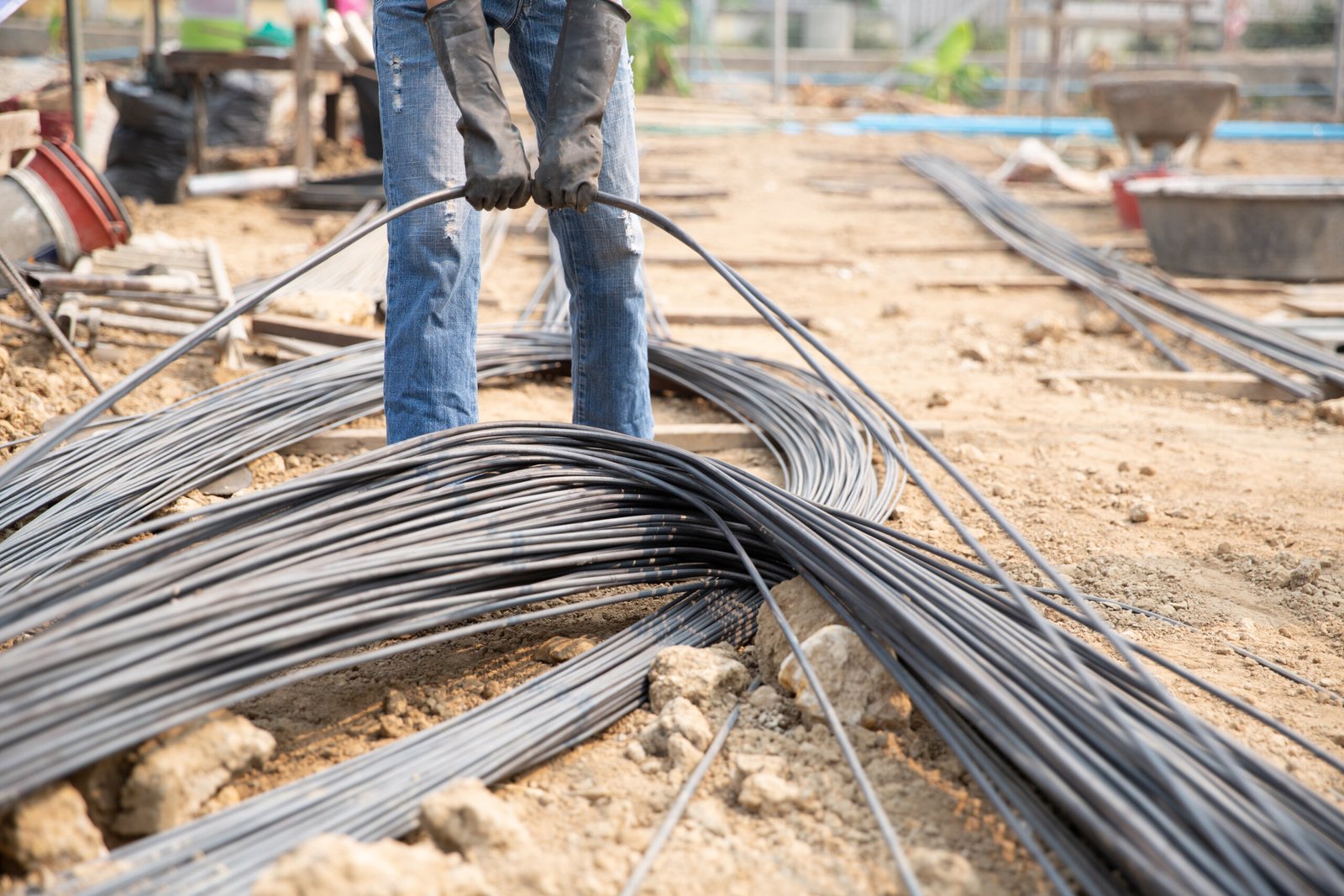Fiberglass reinforced polymer (GFRP) rebar is not just an alternative to steel — it represents a major technological advancement. Its performance depends on a strict manufacturing process that ensures high mechanical strength, durability, and long-term reliability in reinforced concrete.
In this article, discover step by step how GFRP rebar is produced — from raw materials to the finished product ready to reinforce tomorrow’s infrastructure.
1. Raw Materials: The Foundation of Performance
The quality of a composite rebar starts with the selection of its components:
• Glass fibers:
- E-glass type: general-purpose and economical.
- AR-glass type (Alkali Resistant): recommended for concrete, as it resists alkaline environments found in cement.
• Thermosetting resins:
- Unsaturated polyester: good balance between cost and performance.
- Vinyl ester: excellent chemical resistance.
- Epoxy: superior mechanical performance.
• Additives and fillers: UV retardants, pigments, and coupling agents enhance the fiber–resin bond.
👉 The balance between these materials defines the long-term durability of the rebar.
2. Manufacturing Process: Pultrusion
Pultrusion is the most common process used to manufacture GFRP rebar.
Main stages:
- Fiber unwinding
- Glass fibers arrive in continuous spools.
- They are aligned and tensioned to form the main direction of strength.
- Resin impregnation
- Fibers pass through a resin bath, ensuring each filament is fully coated.
- Heated die shaping
- The resin polymerizes under heat.
- The final cross-section (round or ribbed) is defined by the die mold.
- Cooling and calibration
- The bar is cooled to stabilize the resin and calibrated to ensure uniform diameter.
- Cutting to standard lengths
- Typically 6 m, 12 m, or custom lengths as required.
👉 This controlled process ensures perfect homogeneity and high mechanical strength.
3. Surface Ribbing and Concrete Bond
A key feature of GFRP rebar is the ribbed or helical surface pattern, which improves its bond with concrete.
- Silica sand coatings may be applied for enhanced mechanical adhesion.
- Proper ribbing is essential for composite–concrete interaction.
4. Quality Control and Standards
Each production batch undergoes strict laboratory testing:
- Tensile strength (ASTM D7205)
- Modulus of elasticity
- Fatigue resistance
- Bond strength with concrete
- Chemical durability (alkali, salt, and acid exposure)
👉 Standards & references: ASTM D7957, ACI 440.1R, and integration within Eurocode frameworks.
5. Innovations in Manufacturing
Recent research focuses on enhancing GFRP performance through:
- Fiber hybridization: combining glass and carbon fibers for greater strength.
- Nanotechnology: adding nanoparticles to improve chemical and thermal resistance.
- Advanced automation: real-time continuous production with digital quality control.
6. Tangible Benefits for Construction Sites
Thanks to this advanced process, GFRP rebars provide construction professionals with:
- Lightweight and easy-to-handle products
- Faster installation compared to steel
- Proven durability under extreme conditions
- Compliance with international standards
7. Opportunities for Tunisia and Africa
Establishing local GFRP manufacturing lines would allow Tunisia to:
- Reduce dependence on imports
- Develop an innovative industrial sector
- Position itself as an African leader in sustainable construction solutions
Conclusion
The success of composite reinforcement lies in a mastered manufacturing process, from raw materials to quality control.
Through pultrusion and continuous innovation, GFRP rebar offers superior performance and durability compared to steel.
It is not just a material — it’s an industrial revolution redefining the standards of modern construction.

